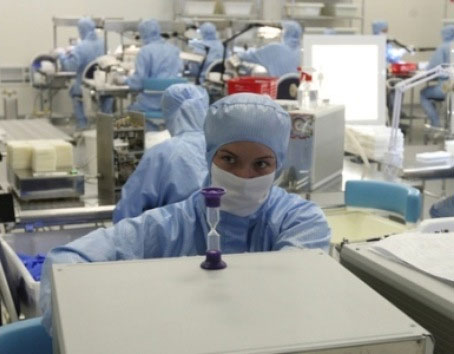Russian chemists discover new compounds
Russian scientists have predicted the existence of compounds that were previously thought to be contrary to chemical laws. The scientific community under Professor Artem Oganov has discovered a previously unknown sodium salt compound . These compounds stabilize under high pressure in the ground. The article by Russian scientists was published in the recent issue of 'Science' .
The group of scientists under the guidance of Artem Oganov, Professor of Stony Brook University in New York and Head of the Laboratory at one of Russia's best universities - Moscow Institute of Physics - Engineering, has changed The view of one of the most famous chemicals - sodium chloride, is common salt. Russian scientists have developed a method to predict crystal structures , including salt. Mr. Oganov calculated that naturally occurring sodium chloride chemicals "unexpectedly" contradict the traditional chemical concept. Moreover, he showed that these compounds have relatively stable thermodynamics under certain environmental conditions.

Previously, it was assumed that sodium and chlorine were combined only by the formula of NaCl. This is salt. Mr. Oganov discovered chlorine compounds with sodium that have unusual structures. The compounds that he predicted were metal. The chlorine compound with sodium according to the formula of Na 3 Cl is an unusual material with alternating layers - salt (NaCl) and pure sodium "metal" . Meanwhile Na 3 Cl has two-way transmission because NaCl layers are dielectric, and sodium-conductive layers.
Newly discovered compounds do not exist in normal conditions, but, are quite common in the ground and on other celestial bodies. The problem is at extremely high pressures. Mr. Artem Oganov said: "So it is possible to stabilize the" strange "compound.
In the researchers' opinion, it is possible to create other harsh conditions for new compounds to appear, for example, on crystal surfaces. Oganov further explained that the surface is a harsh condition, where about half of the chemical bonds are broken. The chemical composition on the crystal surface is not the same as the chemical composition in volume '.
Scientists around the world began using Artem Oganov's method to predict crystal structures.
- Find out how to make super-strong explosives at relatively low pressures
- Discover new methods to 'Arrest' intermediate compounds in water
- Discover compounds that make old books smell good
- Smart glass
- Discover the secret of the red tide
- Discover Russian helicopter Kamov Ka-52 Alligator named
- New compounds can kill many types of cancer
- Discover the Russian SU-34 fighter plane
- Harvard announced 2.3 million new compounds that generate electricity from the sun
- Detects compounds in tropical plants that cure pancreatic cancer
- Discover potential biofuels
- Discovered Russian generals in Turkey
 'Fine laughs' - Scary and painful torture in ancient times
'Fine laughs' - Scary and painful torture in ancient times The sequence of numbers 142857 of the Egyptian pyramids is known as the strangest number in the world - Why?
The sequence of numbers 142857 of the Egyptian pyramids is known as the strangest number in the world - Why? History of the iron
History of the iron What is alum?
What is alum?